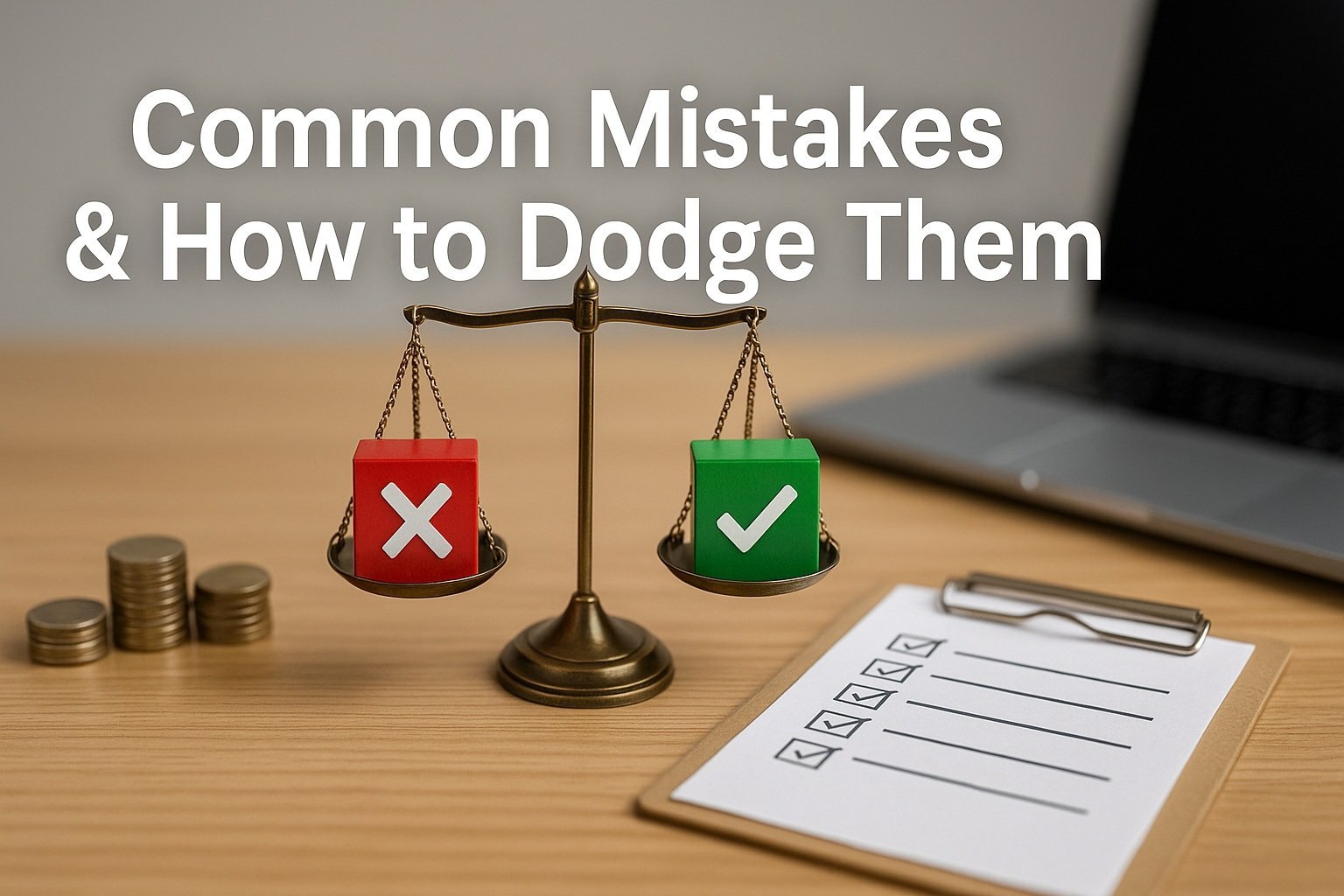
What Is Lifestyle Inflation?
Lifestyle inflation happens when your spending climbs in tandem with your income instead of staying flat or growing more slowly. In plain terms, every time you get a raise or bonus, you gently nudge your budget upward, upgrading dinners out, bumping up your rent, or opting for premium subscriptions so that your “extra” money never actually feels like extra.
You may also hear the term ‘lifestyle creep’, which is essentially the same phenomenon under a different name. While inflation brings to mind rising prices, lifestyle creep emphasises how small, habitual spending increases accumulate over time. Both terms point to the same trap: welcoming higher costs as if they’re deserved rewards rather than potential savings opportunities.
 Imagine you earn an extra $500 a month. Without checking your habits, you might switch to a pricier gym plan, add a streaming bundle, or start ordering meal kits. Those little upgrades add up; soon your newfound cash is swallowed by recurring costs and deluxe upgrades. Recognising what lifestyle inflation and lifestyle creep really mean gives you the power to pause before each purchase and decide whether it moves you closer to long-term security or merely keeps pace with rising expenses.
Imagine you earn an extra $500 a month. Without checking your habits, you might switch to a pricier gym plan, add a streaming bundle, or start ordering meal kits. Those little upgrades add up; soon your newfound cash is swallowed by recurring costs and deluxe upgrades. Recognising what lifestyle inflation and lifestyle creep really mean gives you the power to pause before each purchase and decide whether it moves you closer to long-term security or merely keeps pace with rising expenses.
Why Lifestyle Creep Spikes After a Raise
It feels great to see a bigger number on your pay cheque, but it can also trigger an almost automatic urge to upgrade everything around you. Psychologically, when your income jumps, your brain interprets that bump as permission to “keep up” with a more expensive lifestyle. Suddenly, your friends’ weekend brunch spots, the latest gadget drops, and those targeted ads start looking like necessities instead of nice-to-haves.
First, there’s social proof: watching peers post about fancy vacations or brand-new cars on social media nudges you to match their standard of living. You know that subtle pressure when everyone in your circle seems to be levelling up? That’s FOMO in action. Fear of missing out can be a powerful driver of impulse buys. Then there’s advertising psychology: marketers know you’ve got extra room in your budget and flood your feeds with personalised offers. Before you know it, you’re eyeing premium coffee subscriptions, high-end workout gear, or a loftier apartment simply because it’s within reach.

Understanding these triggers is the first step to avoid lifestyle inflation. By recognising social proof for what it is – a spotlight on other people’s highlight reels – you can pause before you spend. When you feel FOMO creeping in, take a moment to ask yourself if the purchase aligns with your long-term goals or if it’s just a reaction to external pressure. And when targeted ads pop up, remind yourself that those offers will still be there tomorrow, but the money you save by skipping them could work harder for you if it’s parked in a savings vehicle or your retirement account.
By shining a light on the psychology behind lifestyle creep, you reclaim control over that extra income and set the stage for the seven proven saving strategies that follow.
Lifestyle-Inflation Check: 5-Point Self-Audit
Before you ramp up spending on every little upgrade, run through this quick five-point lifestyle inflation checklist to spot creeping costs and take back control of your budget:
-
Rising Recurring Bills
◦ Review your monthly subscriptions and memberships. Have you added new services since your last raise? If your streaming, software, or gym bills grew without you cancelling anything, that’s a red flag. -
Savings Rate Stall
◦ Calculate what percentage of your raise went into savings or investments. If you find that less than 30 percent of each bump is being saved, it could signal that lifestyle creep is eating up your extra cash. -
Impulse Upgrade Triggers
◦ Track any impulse buys in the past three months. Did you upgrade tech gadgets, fashion pieces, or dining habits soon after a pay cheque increase? Noting these patterns helps you catch spending decisions driven by emotion instead of need. -
Credit Card Balance Trends
◦ Check if your average credit card balance has risen alongside your income. A growing balance, even if you pay it off in full each month, can indicate that you’re spending more simply because you can. -
Goal Misalignment
◦ Compare your actual spending to your long-term goals. If you promised yourself a vacation fund or early retirement contributions but redirected that money toward creature comforts, it’s time to realign your priorities.
Feel free to print or screenshot this lifestyle inflation checklist and tick off each box honestly. The clearer you are about how and why you spend extra dollars, the easier it becomes to steer new income toward meaningful growth instead of routine upgrades.
Automate “Pay Yourself First” Within 24 Hours of Your Raise
As soon as you see that bigger pay cheque land in your account, set up an automatic transfer that diverts a fixed percentage, ideally 20–30 cents, straight into savings or investment accounts. By treating your raise like a non-negotiable expense, you prevent any temptation to spend those extra dollars on upgrades you don’t really need.
 Most payroll systems let you split your direct deposit across multiple accounts. Take advantage of that feature by allocating a slice of your raise to:
Most payroll systems let you split your direct deposit across multiple accounts. Take advantage of that feature by allocating a slice of your raise to:
-
Emergency fund for unexpected costs
-
Retirement accounts such as an IRA or 401(k)
-
Long-term goals like a down payment or investment fund
If payroll splits aren’t an option, set up an auto-transfer rule with your bank so that within 24 hours of payday, money moves from checking into your chosen “growth” accounts. Automating this step means you never have to wrestle with discipline; it happens whether you remember or not.
By front-loading your savings, you mentally adjust to living on your previous income level. Any lifestyle upgrades you pursue afterwards come from the leftover balance, not from the portion you’ve already locked away for future wealth. This simple automation is one of the most powerful salary-increase saving strategies because it ensures your raise truly works for you.
What you’ll need to get started:
-
Login credentials for your payroll or banking portal
-
Desired percentage split for each savings goal
-
Account numbers for each destination (emergency fund, retirement, etc.)
Once you’ve set it up, track that automated transfer for a month. Notice how little effort it really takes and how quickly your savings begin to grow without a second thought.
Saving Strategies to Keep Your Raises Working for You

Upgrade the 50/30/20 Rule Just for Your Raise
You’ve probably heard of the classic 50/30/20 budgeting split 50 percent needs, 30 percent wants, and 20 percent savings. After a raise, though, you have an opportunity to turbocharge that formula. Consider carving out 40 percent of your raise for savings, 10 percent for upgraded lifestyle treats, and tucking the remaining 50 percent back into your essentials budget.
By dedicating a larger slice of your bump to savings, you lean hard into “avoiding lifestyle inflation. ” That smaller 10 percent fun fund lets you still enjoy a nicer dinner or a weekend getaway without derailing your progress. Because the essential costs of rent, utilities, and insurance stay the same, this tweak ensures you’re consciously choosing how much of your raise fuels growth versus guilt-free enjoyment.
Cap Lifestyle Costs at Inflation +1 Per Cent
Inflation erodes purchasing power every year, so matching it is a natural ceiling. Adding just one extra percentage point gives you minimal breathing room without spiralling expenses. For example, if inflation runs at 3 percent, limit lifestyle upgrades like new clothes, dining out, and streaming services to no more than 4 percent more than last year’s total.
This hard rule fights stealth spending by forcing you to quantify your upgrades. Track last year’s discretionary outlay, calculate your cap, and stick to that line in the sand. Over time, even a 1 percent allowance compounds into significant savings as future raises get parked instead of poured into ever-growing habits.
Use Sinking Funds for Guilt-Free Treats
Impulse splurges are lifestyle creep’s best friend. Sinking funds flip the script: you earmark small, regular contributions for planned treats, vacations, holiday gifts, or hobby gear so you never tap your core budget on a whim.
Here’s how it works: decide on a treat (say, a $600 trip six months from now). Divide $600 by the number of pay periods until that date; if you’re paid biweekly, that’s about $50 per pay cheque. Automate that transfer into a separate “vacation” account. When the date arrives, you pay out of your sinking fund guilt-free, while your main checking and savings remain untouched.
This strategy prevents lifestyle inflation by distinguishing between structured rewards and spur-of-the-moment buys. It lets you enjoy the finer things without compromising the portions of your raise you’ve committed to save.
Fast-Track High-Interest Debt with Raise “Snowballs”
Got credit card debt or a pricey personal loan? Use your raise to supercharge the debt-snowball or avalanche method. Instead of applying your entire extra income to new savings, allocate the first chunk to knock out the smallest balance or the highest-rate balance faster than planned.
For instance, if you earn an extra $500 monthly and your minimums total $300, throw an additional $200 onto your target debt. Once that balance clears, roll both the minimum and your $200 boost onto the next debt. This focused payoff approach saves you interest and frees up cash flow that you then redirect into savings in later months.
By borrowing your raise temporarily to crush debt, you avoid lifestyle inflation and emerge debt-free sooner, leaving more room for genuine wealth-building.
Super-Size Tax-Advantaged Accounts (401(k), PPF, ISA)
Tax-advantaged vehicles are compounding powerhouses. When your employer match or government scheme is on the table, use part of your raise to max out contributions. For U.S. savers, that might mean raising your 401(k) contribution by a few percentage points; in India, boosting your Public Provident Fund (PPF) allocation; and in the U.K., topping up your ISA.
Because these accounts often use pre-tax dollars or shelter earnings from capital gains taxes, every dollar you pump in stretches further. Automate this increase so that your retirement and long-term vehicles grow in lockstep with each pay bump. You’ll barely notice the extra withholding, but decades of tax-sheltered compounding can add hundreds of thousands to your nest egg.
Reinvest in Career-Boosting Skills
Your highest return on investment often comes from you. Carve out a slice of your raise, say 5 to 10 cents, for courses, certifications, or conferences that enhance your skill set. Whether it’s a coding bootcamp, leadership workshop, or industry certification, this reinvestment can drive future raises and promotions.
Treat this budget line like any other savings goal: set up a sinking fund or automate transfers to a “professional development” account. When the opportunity arises, you’re ready to invest without tapping emergency reserves. Over time, these career-boosting expenses can compound into larger salary increases, making each initial raise seed further growth.
Common Mistakes & How to Dodge Them

Even with the best intentions, it’s easy to slip up. Here are four of the most frequent missteps and how to sidestep each one.
| Common Mistake | How to Dodge It |
|---|---|
| Treating your raise like free money | Automate savings first. If you never see the extra in your checking, you can’t spend it by habit. |
| Ignoring small, creeping subscriptions | Review recurring charges monthly. Cancel any service you haven’t used in the past 30 days. |
| Skipping a self-audit on spending habits | Run the five-point checklist whenever your pay cheque grows. Awareness is the antidote to creep. |
| Reacting to impulse FOMO purchases | Implement a 24-hour rule: wait a day before buying non-essentials and revisit your goals. |
Don’t fall into the trap of thinking “just this once” won’t matter. By catching these pitfalls early, you’ll keep your spending aligned with your aspirations and ensure every raise truly fuels your future.
FAQ:
How much of my raise should I save vs spend?
A smart starting point is to follow the upgraded 40 / 10 / 50 split we covered earlier: funnel 40 percent of your raise into savings and investments, earmark 10 percent for fun upgrades, and let the remaining 50 percent cover essentials. This tweak leans heavily into avoiding lifestyle inflation while still giving you room to enjoy a little reward.
Is lifestyle creep really bad for long-term wealth?
Yes, unchecked lifestyle creep quietly erodes your ability to build real net worth. When each extra dollar is funnelled straight into upgraded spending, premium subscriptions, fancier dinners, or pricier vacations, you miss the chance to compound savings or pay down debt. Over years, those “small” increases add up to major lost growth.
What’s the fastest way to stop lifestyle inflation after a promotion?
Automate “pay yourself first” within 24 hours of payday. Set up direct-deposit splits or bank transfers so a fixed percentage of your raise lands immediately in savings, retirement, or investment accounts. If you never see the extra cash in your checking, you can’t accidentally spend it.
Should I increase my retirement contribution or emergency fund first?
Start by topping up your emergency fund to three to six months of expenses – safety first. Once you’ve hit that buffer, redirect new raises into tax-advantaged retirement accounts. That way you’re protected against short-term shocks and still capitalising on compounding over the long haul.
What’s the difference between lifestyle inflation and a cost-of-living adjustment?
A cost-of-living adjustment (COLA) matches increases in consumer prices – think rent hikes or grocery costs – so your purchasing power stays steady. Lifestyle inflation happens when you let your discretionary spending rise above those basic cost increases, treating pay bumps as an invitation to upgrade rather than as protection against rising prices.
How do I keep up with friends’ spending without going broke?
Recognise social proof for what it is: everyone posting highlights doesn’t show their full budget story. Use sinking funds for planned treats, set a hard cap on lifestyle upgrades tied to inflation plus one percent, and apply a 24-hour rule before impulse buys. That balance keeps friendships healthy without derailing your financial goals.
Can lifestyle creep ever be good for motivation?
In small doses, rewarding yourself for hard work can boost morale – think of a modest dinner out after hitting a career milestone. The key is to budget those treats via sinking funds so they don’t morph into habits. When rewards are planned, they reinforce positive behaviour without inviting runaway spending.
What budgeting apps help control post-raise spending?
Tools like YNAB (You Need a Budget), Mint, and PocketGuard offer customisable envelopes or categories that make the 50/30/20 (or your upgraded split) crystal clear. These apps send alerts when you’re nearing your category limits, helping you spot lifestyle inflation triggers before they become habits.

























